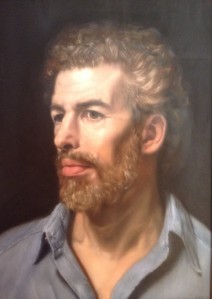Born to do Math 65 – Errol Morris
Scott Douglas Jacobsen & Rick Rosner
June 15, 2017
[Beginning of recorded material]
Scott Douglas
Jacobsen: Do you remember when we were talking about Errol Morris a little
while ago?
Rick Rosner: Yup.
Jacobsen: So, his
idea of the framing of a photo. Usually, when talking about a universe of
discourse, it is a well-defined set of parameters for discussion on a topic
within traditionally well-defined fields. IC lenses are fuzzy lenses, it is
continually keeping in mind what is outside of the frame in a fuzzy way.
If it is biology, you
understand, at the end of the day, that this has an underlying root in physics.
It is just that this is a more convenient way to talk about this scale of
organization. So, you use these scales and these stories.
Rosner: Yea, you
talk about couples falling in love with mating behaviours rather than the
biology or chemistry of it with the release of serotonin. You could go farther
with out serotonin and dopamine work to regulate synaptic whatever, and then
you can take it further and further down into the constituent molecules, but at
that point you’ve gone way too far.
You are way out of the context of couples forming for most
discussions. Some people’s jobs are to talk about the chemistry and biology and
feelings of falling in love, but you don’t need to go that far when you’re
talking about falling in love – within a…
If you’re asking someone for help about how to write a
romantic comedy, the chemistry and biology may not come up.
[End of recorded material]
Authors[1]

Rick Rosner
American Television Writer
RickRosner@Hotmail.Com
Rick Rosner

Scott Douglas Jacobsen
Editor-in-Chief, In-Sight Publishing
Scott.D.Jacobsen@Gmail.Com
In-Sight Publishing
Endnotes
[1] Four format points for the session article:- Bold text following “Scott Douglas Jacobsen:” or “Jacobsen:” is Scott Douglas Jacobsen & non-bold text following “Rick Rosner:” or “Rosner:” is Rick Rosner.
- Session article conducted, transcribed, edited, formatted, and published by Scott.
- Footnotes & in-text citations in the interview & references after the interview.
- This session article has been edited for clarity and readability.
- American Psychological Association. (2010). Citation Guide: APA. Retrieved from http://www.lib.sfu.ca/system/files/28281/APA6CitationGuideSFUv3.pdf.
- Humble, A. (n.d.). Guide to Transcribing. Retrieved from http://www.msvu.ca/site/media/msvu/Transcription%20Guide.pdf.
License
In-Sight Publishing and In-Sight: Independent Interview-Based Journal by Scott Douglas Jacobsen is licensed under a Creative Commons Attribution-NonCommercial-NoDerivatives 4.0 International License.
Based on a work at www.in-sightjournal.com and www.rickrosner.org.
Copyright
© Scott Douglas Jacobsen, Rick Rosner, and In-Sight Publishing and In-Sight: Independent Interview-Based Journal 2012-2017. Unauthorized use and/or duplication of this material without express and written permission from this site’s author and/or owner is strictly prohibited. Excerpts and links may be used, provided that full and clear credit is given to Scott Douglas Jacobsen, Rick Rosner, and In-Sight Publishing and In-Sight: Independent Interview-Based Journal with appropriate and specific direction to the original content.
No comments:
Post a Comment